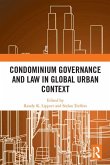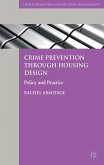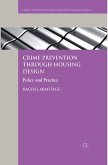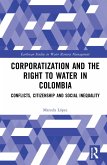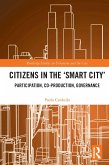The Open Access version of this book, available at https://www.taylorfrancis.com/books/9780429352775 has been made available under a Creative Commons Attribution-Non Commercial-No Derivatives 4.0 license.
No city environment reflects the meaning of urban life better than a public place. A public place, whatever its nature-a park, a mall, a train platform or a street corner-is where people pass by, meet each other and at times become a victim of crime. With this book, we submit that crime and safety in public places are not issues that can be easily dealt with within the boundaries of a single discipline. The book aims to illustrate the complexity of patterns of crime and fear in public places with examples of studies on these topics contextualized in different cities and countries around the world. This is achieved by tackling five cross-cutting themes: the nature of the city's environment as a backdrop for crime and fear; the dynamics of individuals' daily routines and their transit safety; the safety perceptions experienced by those who are most in fear in public places; the metrics of crime and fear; and, finally, examples of current practices in promoting safety. All these original chapters contribute to our quest for safer, more inclusive, resilient, equitable and sustainable cities and human settlements aligned to the Global 2030 Agenda for Sustainable Development.
No city environment reflects the meaning of urban life better than a public place. A public place, whatever its nature-a park, a mall, a train platform or a street corner-is where people pass by, meet each other and at times become a victim of crime. With this book, we submit that crime and safety in public places are not issues that can be easily dealt with within the boundaries of a single discipline. The book aims to illustrate the complexity of patterns of crime and fear in public places with examples of studies on these topics contextualized in different cities and countries around the world. This is achieved by tackling five cross-cutting themes: the nature of the city's environment as a backdrop for crime and fear; the dynamics of individuals' daily routines and their transit safety; the safety perceptions experienced by those who are most in fear in public places; the metrics of crime and fear; and, finally, examples of current practices in promoting safety. All these original chapters contribute to our quest for safer, more inclusive, resilient, equitable and sustainable cities and human settlements aligned to the Global 2030 Agenda for Sustainable Development.
"Crime and fear in public spaces" consists of an important tool to advance the international urban safety agenda as it provides readers with a view on the debate over safety and public places, taking a multi-disciplinary approach that takes into consideration several fields of knowledge. The cutting-edge research contained in this book incorporates different perspectives on the phenomenon of crime and fear in public places and fosters the co-production of safety, which is a basic principle contained in the Guidelines, thus contributing towards more cohesive societies and safer cities for all."
-Juma Assiago, Head, Safer Cities programme, UN-HABITAT
"With expertise from a diverse range of disciplines, this compilation achieves a thorough investigation of how individual mobility, social and built landscapes, and policies interact and relate to Crime and fear in public places. Insightful and creative, with implications to make communities safer and improve public health."
-Prof Douglas Wiebe, University of Pennsylvania, Philadelphia, USA
"Numerous organizations call for resilient and safe spaces. Many people dream of enjoying vibrant places. Yet, crime and fear in public space threatens these ideals. This book offers timeous information and practical suggestions towards safe places - indeed, a valuable toolkit for everyone working towards inclusive change in public space."
-Prof Karina Landman, University of Pretoria, South Africa
-Juma Assiago, Head, Safer Cities programme, UN-HABITAT
"With expertise from a diverse range of disciplines, this compilation achieves a thorough investigation of how individual mobility, social and built landscapes, and policies interact and relate to Crime and fear in public places. Insightful and creative, with implications to make communities safer and improve public health."
-Prof Douglas Wiebe, University of Pennsylvania, Philadelphia, USA
"Numerous organizations call for resilient and safe spaces. Many people dream of enjoying vibrant places. Yet, crime and fear in public space threatens these ideals. This book offers timeous information and practical suggestions towards safe places - indeed, a valuable toolkit for everyone working towards inclusive change in public space."
-Prof Karina Landman, University of Pretoria, South Africa


